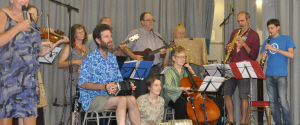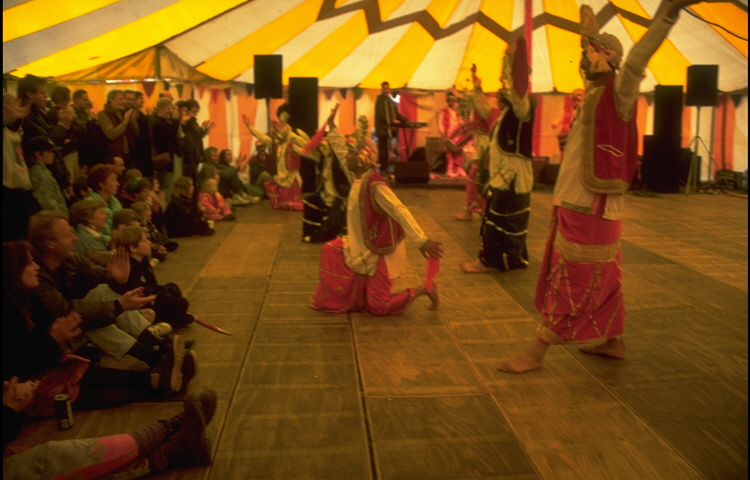DANCES, DANCERS AND DANCING
CEILIDHS
There are several varieties of folk dance that people get involved in around Mid Wales and the Borders. The most common
is the ceilidh, or Country Dance.This is an evening of dances where several couples dance together for fun, to meet others. In a ceilidh there is a caller who will teach you the dances as you go. This only takes about 5-10 minutes as the dances are relatively simple.
PLAYFORD
We have dancing collections from as early as 1651 (Playford) that are still danced. The Playford dances are a little elaborate, and the majority of later dances are much easier to dance. Until recently there was a small groupin Welshpool that was meeting together to learn the dances. We don't know whether they are still in existence.
THE FEST NOZ & FRENCH BAL
Also popular are social dances from France and Brittany. In Brittany an evening of folk dances is called a Fest Noz (lit. night or evening festival) and is largely composed of dances danced in a circle.
The French dances that are most popular are the
Bouree, Scottische and Mazurka. Often all these are combined in one evening. It has become the tradition for these dances to be taught in a workshop before the dance (unless you already know them) not taught during the evening as in a ceilidh.
MORRIS DANCING
Many articles and books have been written about the origins of morris dancing, but there is still no agreement. One theory has its derivation as Morrish, named after the blacked up faces in some traditions. We do know it goes back to at least to the sixteenth century and is often connected to pagan beliefs and ceremonies. That perhaps can best be seen in the Abbots Bromley Horn Dance of Staffordshire.
Morris dancers perform on festive days and feast days, with dances very similar to ceilidh dance figures. Other ritual dances closely related to these are the Sword and Rapper dances of the north of England and Scotland.
There are a proscribed number of dancers, originally men but many fine women sides also exist, and musicians are an integral component of the team.
Different types of morris exist in the North West of England, North East, Cotswold and the Border Morris (England/Wales) as exemplified by the outstanding Shropshire Bedlams.
BRITISH CLOG OR STEP
Within both morris dancing and country dancing there are particular steps, such as the rant or polka step. This stepping is an integral part of the dance but also became an artform in its own right. The general term for this is step dancing, but as it gained much of its character from the sounds made when dancing in clogs it is often also called clog dancing.
This is the ancestor of the tap dancing of the music halls and films, which is done with much lighter shoes fitted with steel 'taps' to the underside. In addition there are specific styles of Welsh clog dancing.
APPALACHIAN STEP DANCING
In 1976 there were huge celebrations for the 200th anniversary of the Declaration of Independence in America. Among other things it sparked an interest in traditional American step dancing and suddenly Appalachian Step sides sprung up all across America. In due course it made its way across the atlantic where it began making an appearance at British Folk Festivals in the late 1980s. British sides soon were formed amd many are still going strong after more than twenty years, such as the Mid Wales based Raise the Dust.
WELSH DANCING
Welsh traditional dances have much in common with England, as music and dance travelled freely across the border, often spread by gypsy communities. There are, however, particular dances collected from Llangadfan and Nantgarw. There is a strong Welsh Folk Dance Society and there is a Folk Dance Club that meets regularly in Aberystwyth.


























